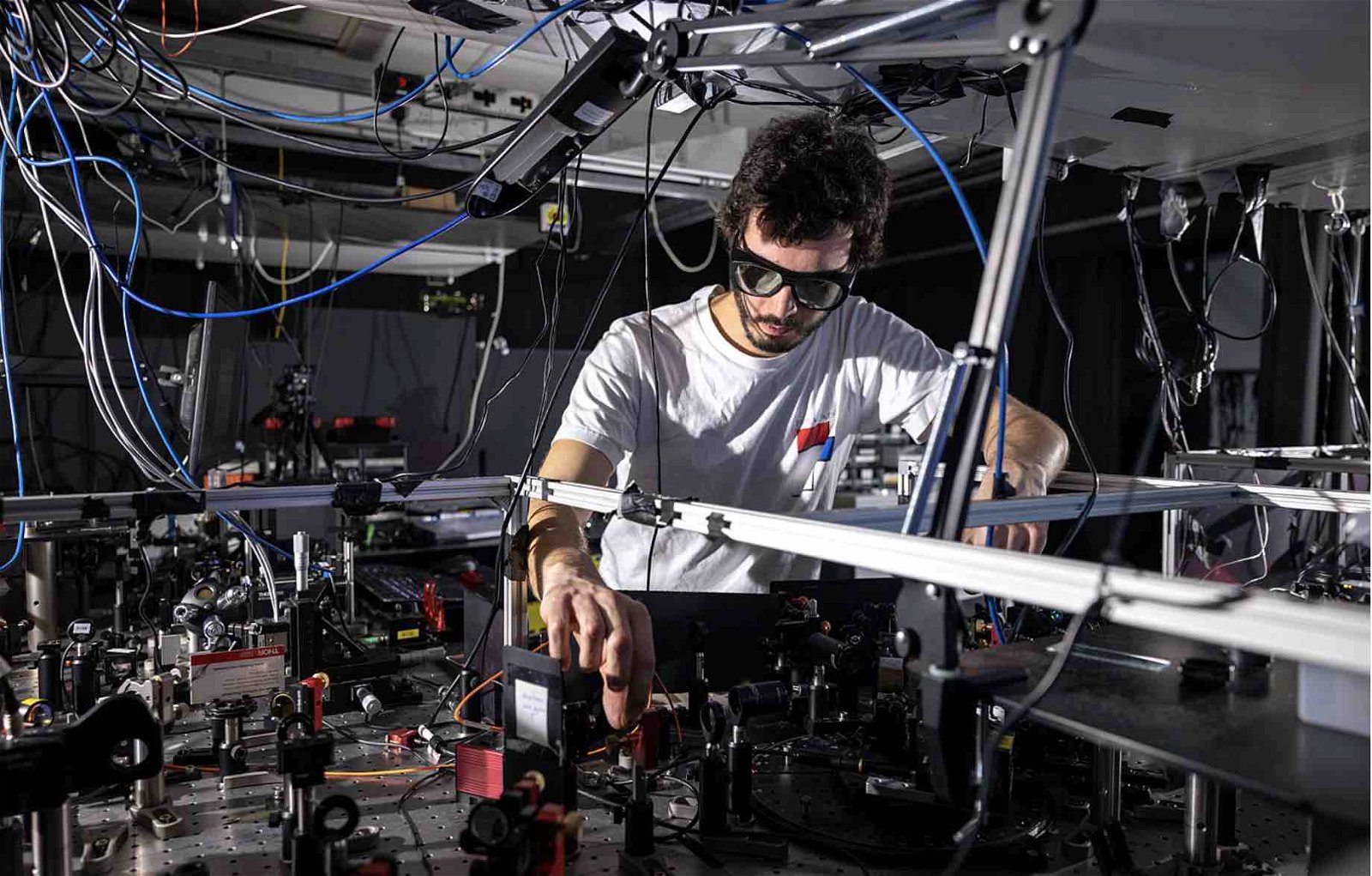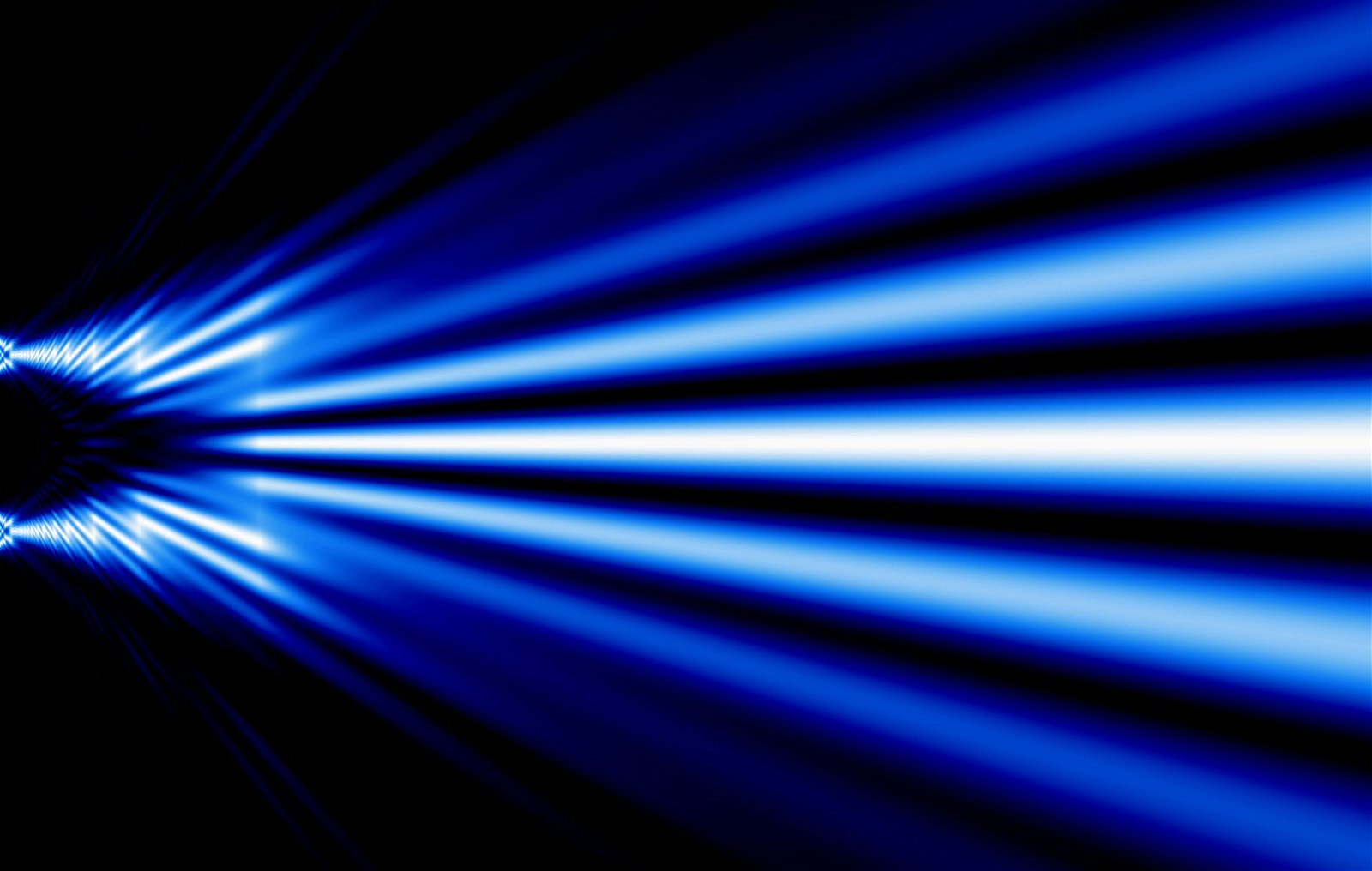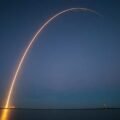The famous double-slit experiment, which first demonstrated light behaving like both particles and a wave, has been recreated by physicists who now say they have achieved it in time rather than in space like in past instances.
The research, conducted by a team at Imperial College London, was achieved using a kind of metamaterial capable of producing changes in its optical characteristics at timescales of just fractions of a second, which the Imperial team says could have a variety of beneficial uses both in the creation of new technologies, as well as our understanding of physics.
The origins of the double-slit experiment go back to 1801, when mathematician Thomas Young famously showed that a beam of light passing through a pair of slits in a sheet produced an interference pattern, indicating that light can appear to behave like a wave.
It was eventually confirmed through additional experimentation that light possesses both particle and wavelike characteristics. Similar findings later determined that other kinds of particles—not just light particles, or photons—can behave in this peculiar manner. Such discoveries showcased the uniqueness of the quantum world and profoundly changed the way physicists thought about nature and reality.
However, all these observations were made under the same general conditions within space. In their recent research, the Imperial College London physics team wanted to see if they could take this one step further: by reproducing the results of Thomas Young’s famous experiment using slits in time, rather than in space.
According to the team’s findings, appearing today in Nature Physics, the experiment was a success, thanks to the use of a material that can change its properties in femtoseconds, a unit of measurement that describes mere quadrillionths of a second. By doing so, the team was able to restrict the passage of light through the material to specific times occurring in quick succession.


“Our experiment reveals more about the fundamental nature of light while serving as a stepping-stone to creating the ultimate materials that can minutely control light in both space and time,” said Professor Riccardo Sapienza, a researcher with the Department of Physics at Imperial and the new study’s lead researcher.
In Thomas Young’s day, the double-slit experiment involved a relatively simple setup, which included a thin, opaque sheet with two thin perforations oriented side by side, through which light shone onto a detector located behind the sheet. As light enters the slits, it splits into two waves that produce the characteristic interference, either enhancing or canceling each other out and producing a series of bands on the detector, varying in strength based on the amount of light that struck different areas.
Of particular interest to researchers, firing single particles toward the slits still produced the interference pattern, seeming to suggest that the light particle could split into two and travel through both slits at once.
Unlike the “classic” version of the experiment, the Imperial researchers employed their “time slits” to alter the frequency of light passing through indium-tin-oxide, a metamaterial that is also frequently used in smartphone screens. This allowed its color to be changed, rather than just its direction like in Young’s original version, resulting in a similar interference pattern through the manipulation of light coloration.
In the Imperial team’s experiment, the indium-tin-oxide’s reflectance was altered at ultrafast timescales with the use of lasers, which researchers used as the “slits” for the light passing through it, resulting in changes of reflectivity over periods of just a few femtoseconds.
“The double time slits experiment opens the door to a whole new spectroscopy,” said Professor Sir John Pendry, co-author of the study, who added that such new control and measurement of light could be “capable of resolving the temporal structure of a light pulse on the scale of one period of the radiation.”
Furthermore, the Imperial team believes the fine control of light through such metamaterial surfaces under conditions similar to those employed in their experiment could have a range of technological applications. It could even lead to the creation of all new technologies, which might include optical invisibility through the manipulation of light and the way it interacts with an object’s surface.
The team also says their research could lead to promising new developments in our knowledge of the universe and might even lead to a deeper understanding of the physics of black holes.
The Imperial team’s paper, “Double-slit time diffraction at optical frequencies,” appeared in Nature Physics on April 3, 2023.
Micah Hanks is the Editor-in-Chief and Co-Founder of The Debrief. He can be reached by email at micah@thedebrief.org. Follow his work at micahhanks.com and on Twitter: @MicahHanks.

